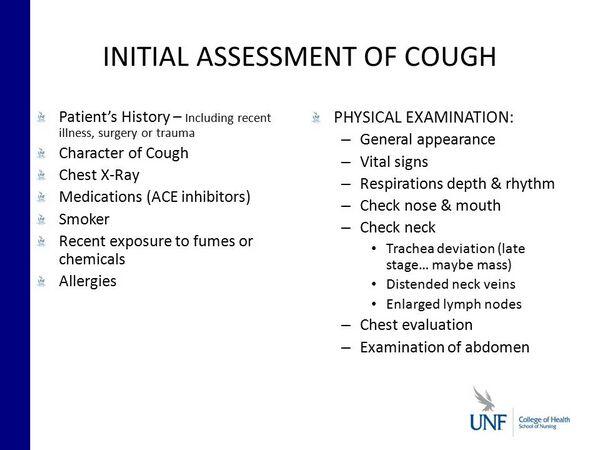
| Relevant Evaluation Criteria | Scenario/Model Outcome | |
| Information Gathering | ||
| 1. Gather essential information about the patient’s symptoms, including: | ||
| a. description of symptom(s) (i.e., nature, onset, duration, severity, associated symptoms) | Patient has had a cold for several days. The rhinorrhea is resolving, but the cough persists, waking the patient, her siblings, and parents at night. The cough is dry and hacking. The patient had a fever the first couple days of the cold but has not had a fever since then. | |
| b. description of any factors that seem to precipitate, exacerbate, and/or relieve the patient’s symptom(s) | The cough is worse when she is put down for naps and at bedtime. She does not cough as much when she is sitting in her car seat/carrier. | |
| c. description of the patient’s efforts to relieve the symptoms | Samantha’s mom says that she looked for Infant Triaminic Thin Strips but could not find them in the pharmacy or grocery store. | |
| 2. Gather essential patient history information: | ||
| a. patient’s identity | Samantha Miller | |
| b. patient’s age, sex, height, and weight | 1-year-old female, 29 inches, 21 lb | |
| c. patient’s occupation | N/A | |
| d. patient’s dietary habits | Regular table foods supplemented with breast milk | |
| e. patient’s sleep habits | Beginning to sleep through the night | |
| f. concurrent medical conditions, prescription and nonprescription medications, and dietary supplements | None | |
| g. allergies | NKDA | |
| h. history of other adverse reactions to medications | None | |
| i. other (describe) | N/A | |
| Assessment and Triage | ||
| 3. Differentiate the patient’s signs/symptoms and correctly identify the patient’s primary problem(s). | The cough appears to be due to a viral URTI. | |
| 4. Identify exclusions for self-treatment. | None | |
| 5. Formulate a comprehensive list of therapeutic alternatives for the primary problem to determine if triage to a medical practitioner is required, and share this information with the caregiver. | Options include: | |
| (1) Refer Samantha to her pediatrician. | ||
| (2) Recommend nondrug therapy. | ||
| (3) Take no action. | ||
| Plan | ||
| 6. Select an optimal therapeutic alternative to address the patient’s problem, taking into account patient preferences. | Samantha’s mom prefers to try your nondrug therapy recommendations before calling the pediatrician. | |
| 7. Describe the recommended therapeutic approach to the caregiver | Use a nasal bulb syringe to clear the nasal passages and reduce the post-nasal drip that is the most likely cause of Samantha’s cough. Place Samantha in her car seat/carrier, and let her sleep in an upright position to reduce the postnasal drip. | |
| 8. Explain to the caregiver the rationale for selecting the recommended therapeutic approach from the considered therapeutic alternatives. | Cough and cold medications are no longer recommended for infants and children under 2 years of age. Manufacturers voluntarily stopped marketing these products in response to FDA concerns about the lack of information about the safety and dosing of these produces in this age group. | |
| Patient Education | ||
| 9. When recommending self-care with nonprescription medications and/or nondrug therapy, convey accurate information to the caregiver: | ||
| a. appropriate dose and frequency of administration | N/A | |
| b. maximum number of days the therapy should be employed | N/A | |
| c. product administration procedures | N/A | |
| d. expected time to onset of relief | N/A | |
| e. degree of relief that can be reasonably expected | N/A | |
| f. most common side effects | N/A | |
| g. side effects that warrant medical intervention should they occur | N/A | |
| h. patient options in the event that condition worsens or persists | A pediatrician should be consulted if the cough worsens or does not improve in a few days. | |
| i. product storage requirements | N/A | |
| j. specific nondrug measures | See step 8. | |
| 10. Solicit follow-up questions from caregiver. | Samantha’s mom asks if it is safe to give cough medicine to her other children (ages 4 and 7 years). | |
| 11. Answer caregiver’s questions. | Some questions have been raised about the safety and dosing of cough medications in children under 6 years of age, but the FDA advisory applies to only children under 2 years of age. Follow the labeled dosage guidelines or consult your pediatrician if you have questions | |


